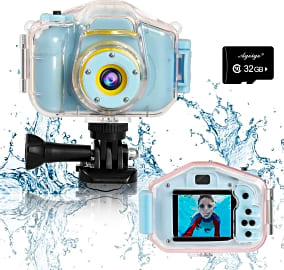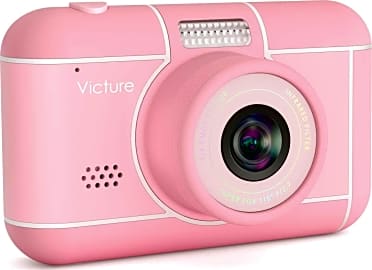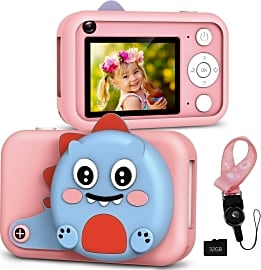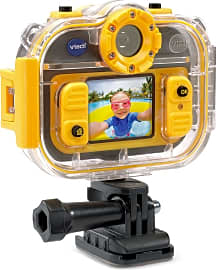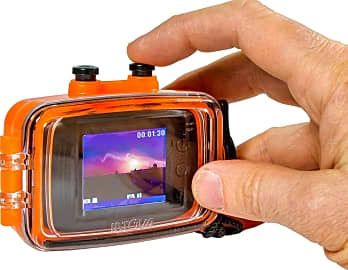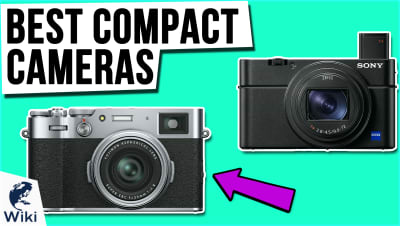The 10 Best Kids Cameras

This wiki has been updated 42 times since it was first published in February of 2016. In this day and age, people often forget that photography is, actually, an art form. Let your children express themselves and explore the world as they never have before with one of these kids' cameras. Taking pictures might just become their next favorite hobby. We've included low-cost models, as well as some that are more than just toys, ranked by image quality, durability, and ease of use. When users buy our independently chosen editorial choices, we may earn commissions to help fund the Wiki.
Editor's Notes
November 23, 2020:
We feel that kids cameras should be more than just simple toys, which is why we did our best to balance options that produce reasonably high-quality images and videos with features that would make them durable and easy to use, and designs that would appeal to youngsters.
When it comes to very young children, below the age of six or seven years old, it is important to choose a model that doesn't require a lot of dexterity, and which is easy for little hands to grasp securely. The VTech Kidizoom Duo DX is one such option, as is the Ourlife Action Cam, each of which serves a very different purpose. The former is more akin to traditional digital cameras adults carry around whereas the latter is a child's version of an action cam.
We like the Fujifilm Instax Hello Kitty because it appeals to a wide age range of people. It could be a fun item for an adult who enjoys the nostalgia of taking Polaroids, or a cute accessory for a young child who is enamored with Hello Kitty things. The Nikon Coolpix W150 is another option we feel is suitable for a wide age range. It technically isn't made for children, but its durable build and reasonable price point for a waterproof digital camera make it a smart choice for teens and tweens.
May 23, 2019:
Given the prevalence of smartphones and kids' almost instictive understanding of their photo functions, this is a category that probably won't see a ton of growth in the years to come. That said, certain toy manufacturers still understand the benefits of teaching kids to use cameras that aren't also phones, not only to familiarize them with equipment that's more specifically photographic, but also to give them something they can drop and break that isn't mommy's expensive iPhone. Companies like VTech, with their Kidzoom Duo, come to mind. That offering made it into our second slot after landing in fifth last year. Part of that was due to some confusion between that model and another by the same company, which we've removed as it's a slightly inferior choice, and the price difference is negligible. In its place we found another VTech model that's more of an action cam.
A few other companies seem interested in making very basic cameras that are water and shock proof, and that make a good gift for kids who might drop them frequently or want to take them for a swim. Nikon's W100 is probably the best example of this, and although it isn't the cheapest option out there, it's undeniably the best for and kids old enough to handle a little more camera.
Capture With The Kids
For example, a camera's lens is one of its most expensive components, and its quality bears heavily on the quality of the images the camera can produce.
It's understandable that kids are drawn to cameras. They produce flashing lights, they have bright screens on their bodies, and adults seem to have a strange love-hate relationship with them. When a child actually sees what a camera does – how it freezes a moment in time that can be preserved for years – that fascination only grows.
Photography is a great tool to teach a child early on in his or her life. It gets them out and about on the lookout for subjects, which is vital to a culture of kids battling obesity and diabetes more or less straight from the womb. It also helps them begin to hone an artistic eye. If your young one has even the slightest inclination toward artistic expression – which pretty much every child has to some degree – the act of selecting subjects to shoot will be one of the first interactive experiences he or she has with a sense of taste in that expression.
The majority of these cameras is built to similar specs you'd see on a lot of consumer point-and-shoot digital cameras. Manufacturers often gear their cameras toward children by reinforcing their designs with waterproofing and shock-proofing technologies. Those technologies cost money, however, so those same manufacturers find corners to cut that children would never notice.
For example, a camera's lens is one of its most expensive components, and its quality bears heavily on the quality of the images the camera can produce. These elements are often much more cheaply made in children's cameras.
The display screen on the digital cameras we have listed is another area of savings, as its resolution is significantly reduced compared to its adult counterparts. A couple of these cameras have no screens at all, however, as they shoot to an instant-development film like old Polaroids.
Kid-proofing New Technologies
Outfitting your child with the best camera to bring out his or her most artistic self begins with a little knowledge about the child in question. I'd argue that the most important thing you can ask yourself before buying anything for your kid that's representative of an expensive technology sector – even if the pieces designed for children aren't terribly expensive – is how destructive your child is.
If you have a zen monk for a child, you might not have to worry, but those are some of the most important features you find among the cameras on our list.
I broke pretty much everything I could get my hands on when I was growing up, so I would have been an ideal candidate for one of the shock-proof or waterproof cameras on this list. If you have a zen monk for a child, you might not have to worry, but those are some of the most important features you find among the cameras on our list.
One of the more exciting features on one or two of these cameras, which you'll see from time to time on consumer point-and-shoots, is a second lens on the other side of the camera for selfies.
You also get to make the choice as to whether your kids will shoot film or digital, a choice most of us didn't have growing up in the film age. Take note of the age ranges on that film camera, as well as each of the cameras on our list, as they aren't all directed at the same group. This is especially important with the instant film camera, as its chemicals can be dangerous to kids.
You Know...For Kids
For the first 150 years of photographic history, cameras were almost exclusively meant for adults. Sure, they could take pictures of children just as easily as they could adults, but they weren't intended for use by kids.
The camera fit into the Game Boy handheld gaming unit like any other game cartridge, but that had a big ball of a lens element on the top of it.
In the 1980s and 90s, toy companies and camera manufacturers ramped up their marketing and development toward a child demographic, with cameras like Polaroid's i-Zone (they beat Apple to the lower-case "i" thing, but Apple went ahead an erased it from the collective memory).
The digital photography revolution changed all that, and among the earliest digital cameras marketed toward children was Nintendo's Game Boy Camera in 1998. The camera fit into the Game Boy handheld gaming unit like any other game cartridge, but that had a big ball of a lens element on the top of it.
In the past decade, as camera makers found it easier and less expensive to pack a fair number of megapixels onto inexpensively produced sensors, they began to pair them with simplified menus and more rugged designs that could stand up to the rigors of childhood.




